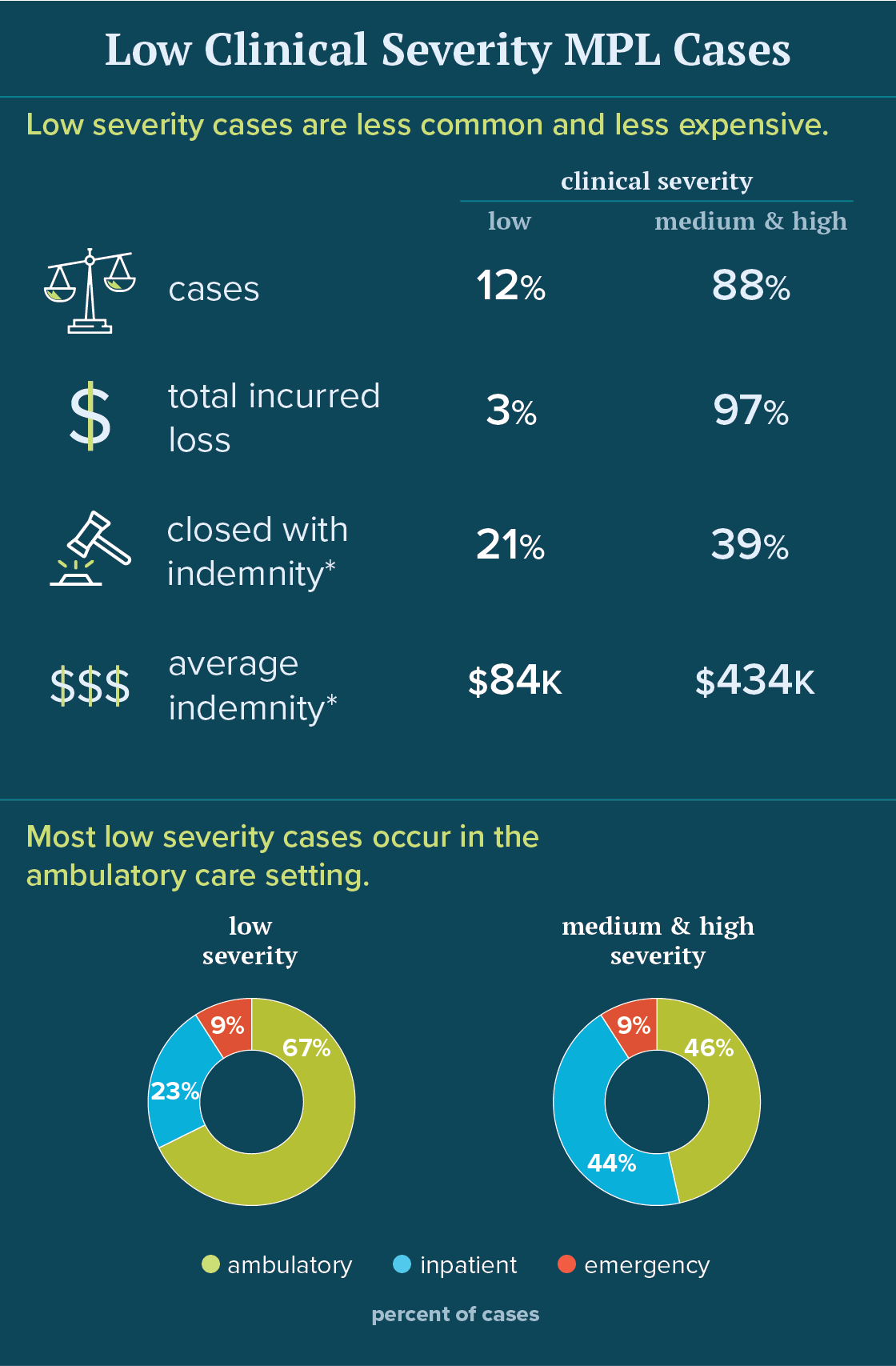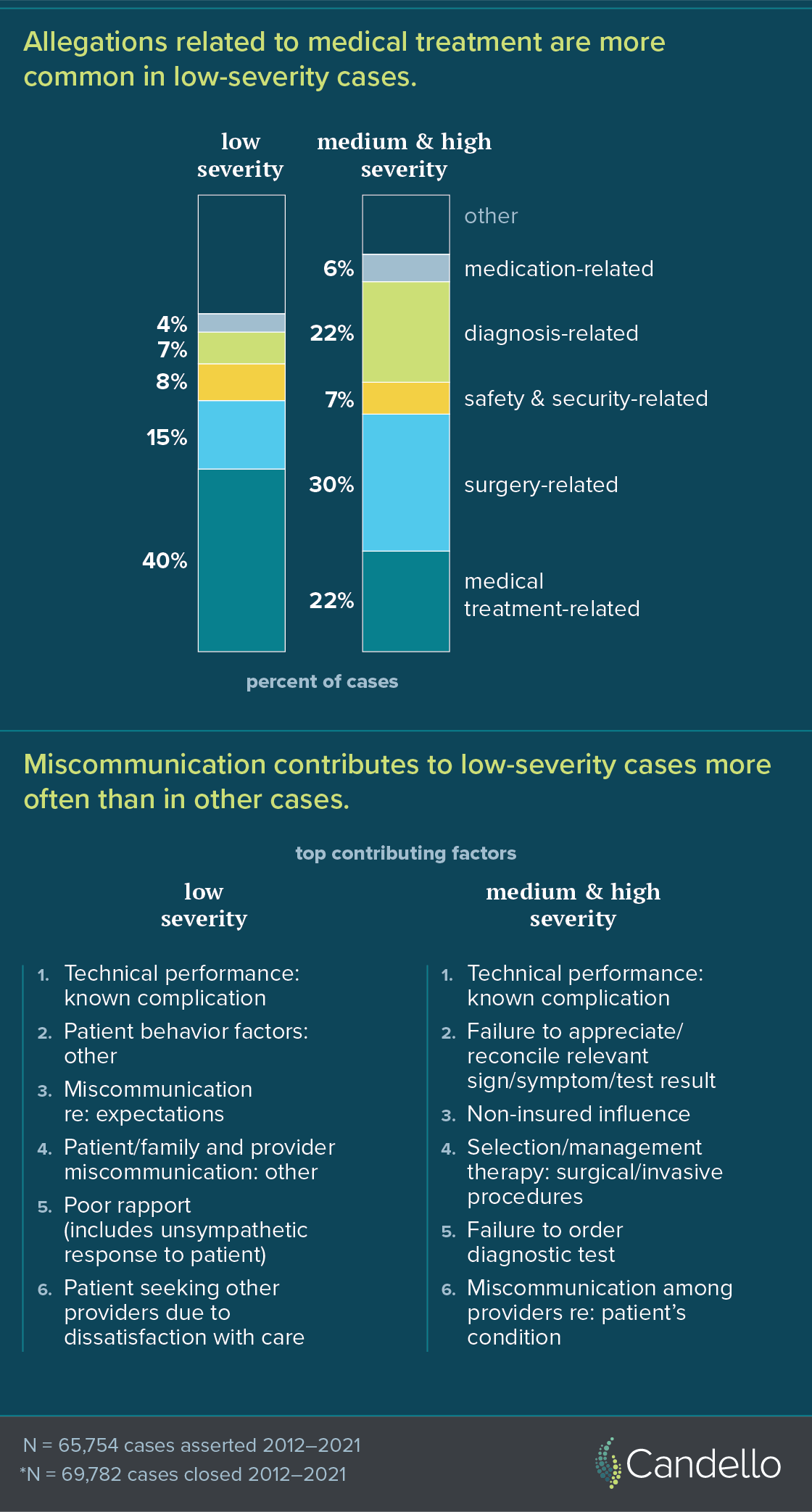Newsletter
Paying Attention to Less Severe MPL Cases
Mar 02, 2023
Roughly one out of every nine medical professional liability (MPL) cases involves an injury that is categorized as insignificant and temporary, or emotional but non-physical. Perhaps not surprisingly, low-severity injury cases are less likely to close with an indemnity payment (with payments 80 percent lower on average), and only account for three percent of all total incurred losses. In the big picture of patient safety and risk management, low-severity cases might not garner a second look, but they should not be ignored.
While this set of cases shares some common characteristics with cases involving more severe injuries, or death, they do tend to touch on less exercised areas of patient safety and risk management. Certainly, it is important to identify any systemic issues that—next time—might result in a more clinically and financially severe outcome.
For many health care providers and administrators whose jobs are impacted by MPL cases regardless of the alleged injury, addressing factors that may prompt low-severity claims and suits is an opportunity to reduce workload and focus on more high-profile issues.


Recent Issues

Getting to the Detail Devils

The Diagnostic Multiverse


